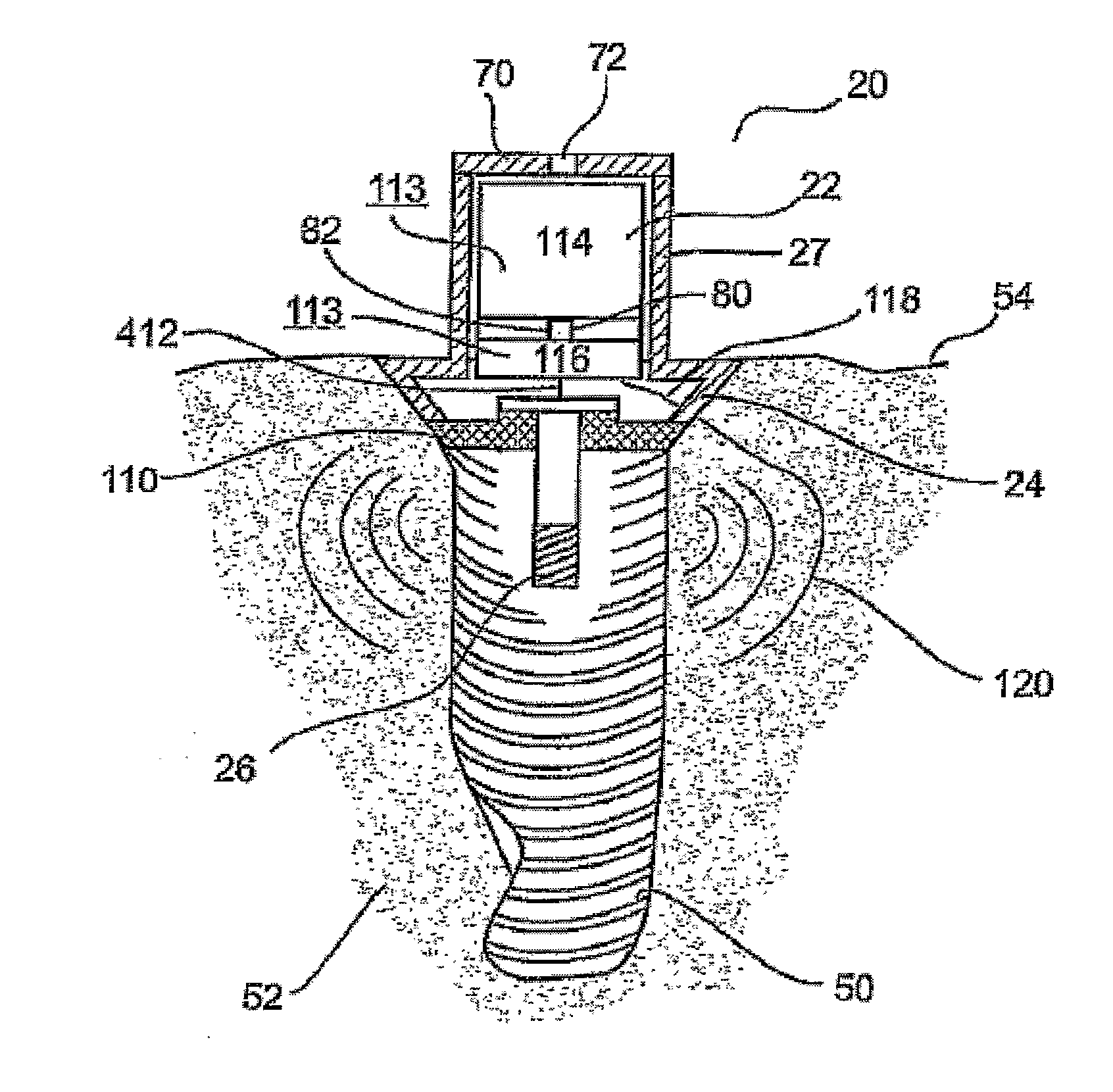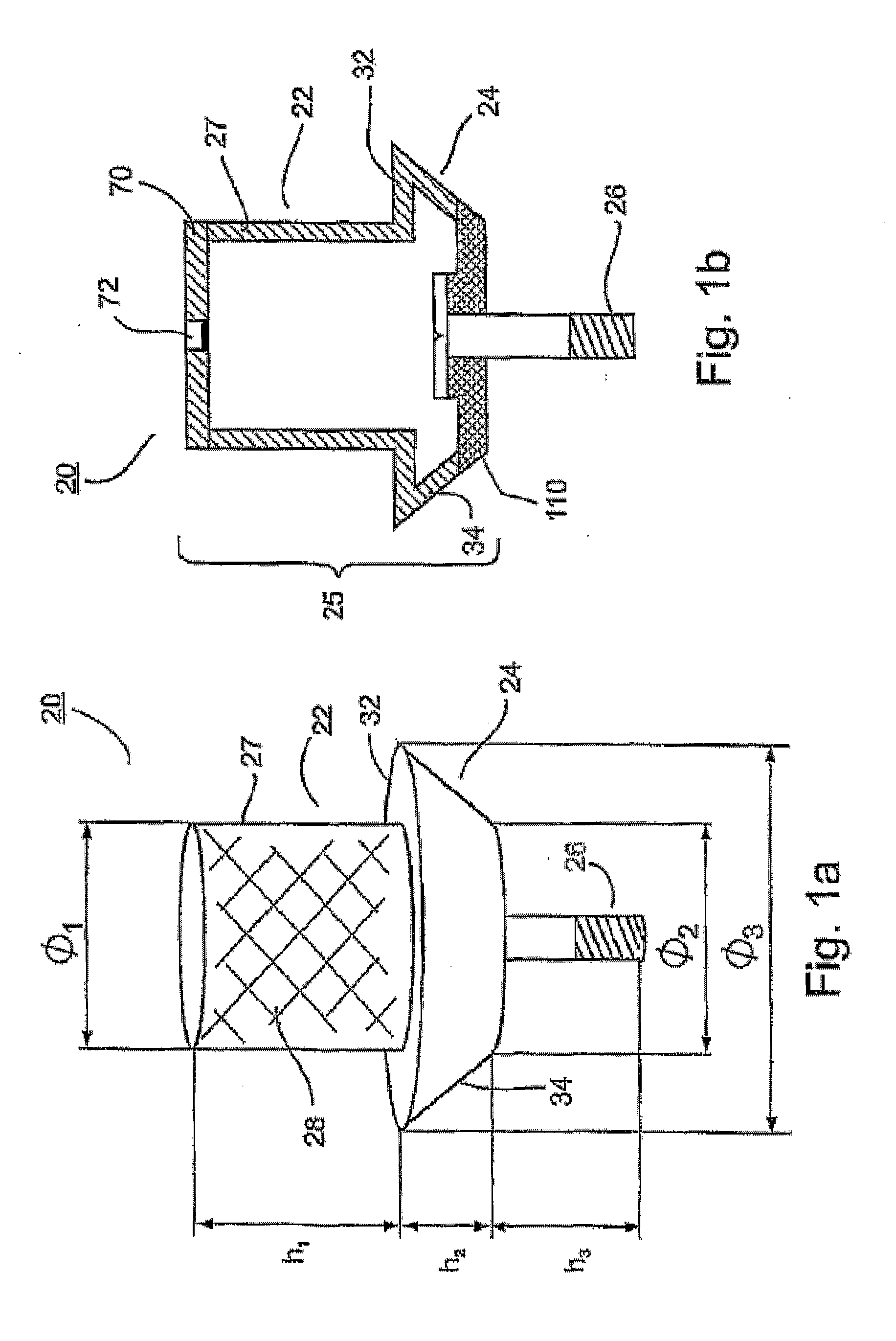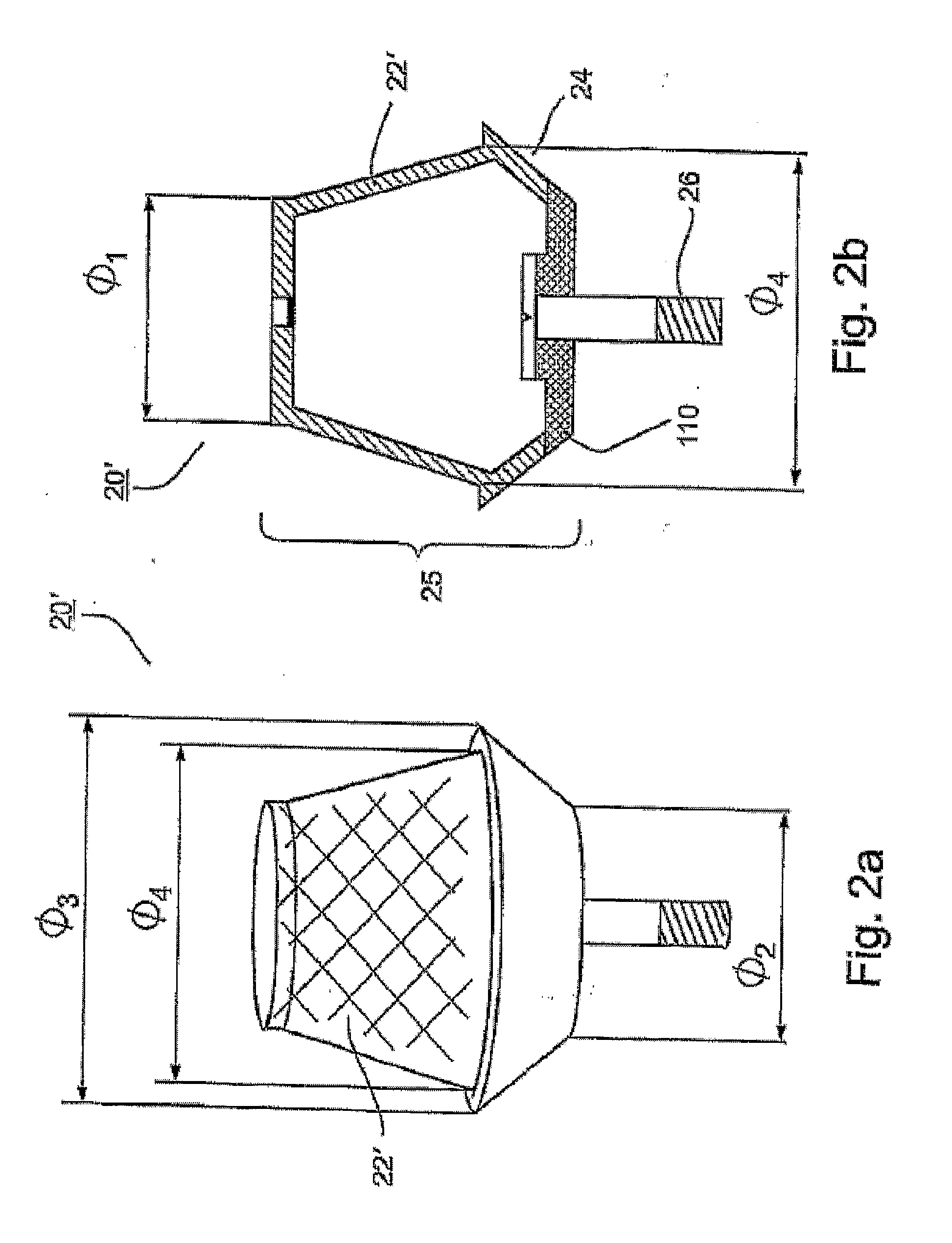Disposable osteogenesis and osseointegration promotion and maintenance device for endosseous implants
a technology of osteogenesis and osseointegration, which is applied in the field of disposable osteogenesis and osseointegration promotion and maintenance devices for endosseous implants, can solve the problems of low bone-to-implant contact ratio, poor bone strength at the interface, and the risk of crestal bone loss of the implantan
- Summary
- Abstract
- Description
- Claims
- Application Information
AI Technical Summary
Problems solved by technology
Method used
Image
Examples
Embodiment Construction
[0037]The present invention discloses, in various embodiments, a disposable osteogenesis and osseointegration acceleration device (hereinafter “osseointegration device”) for endosseous dental implants, capable of providing DC, AC and arbitrary current train pulses, or any combination thereof. In a preferred embodiment in which the osteogenesis device is self-powered, the device preferably uses as power source an internal battery. Alternatively, the osseointegration device can be powered remotely from outside the body. Any internal power source relevant to the present invention will hereafter be referred to as a “microbattery”, while the microcircuit that controls output signals will be referred to as a “stimulation circuit or device”. A power source plus stimulation device will be referred to as “stimulation mechanism”. For the sake of simplicity, the term “microbattery” will be applied hereinbelow also to regular batteries.
[0038]Although the embodiments of the present invention dep...
PUM
| Property | Measurement | Unit |
|---|---|---|
| time | aaaaa | aaaaa |
| time | aaaaa | aaaaa |
| frequency selectivity | aaaaa | aaaaa |
Abstract
Description
Claims
Application Information
 Login to View More
Login to View More - R&D
- Intellectual Property
- Life Sciences
- Materials
- Tech Scout
- Unparalleled Data Quality
- Higher Quality Content
- 60% Fewer Hallucinations
Browse by: Latest US Patents, China's latest patents, Technical Efficacy Thesaurus, Application Domain, Technology Topic, Popular Technical Reports.
© 2025 PatSnap. All rights reserved.Legal|Privacy policy|Modern Slavery Act Transparency Statement|Sitemap|About US| Contact US: help@patsnap.com



